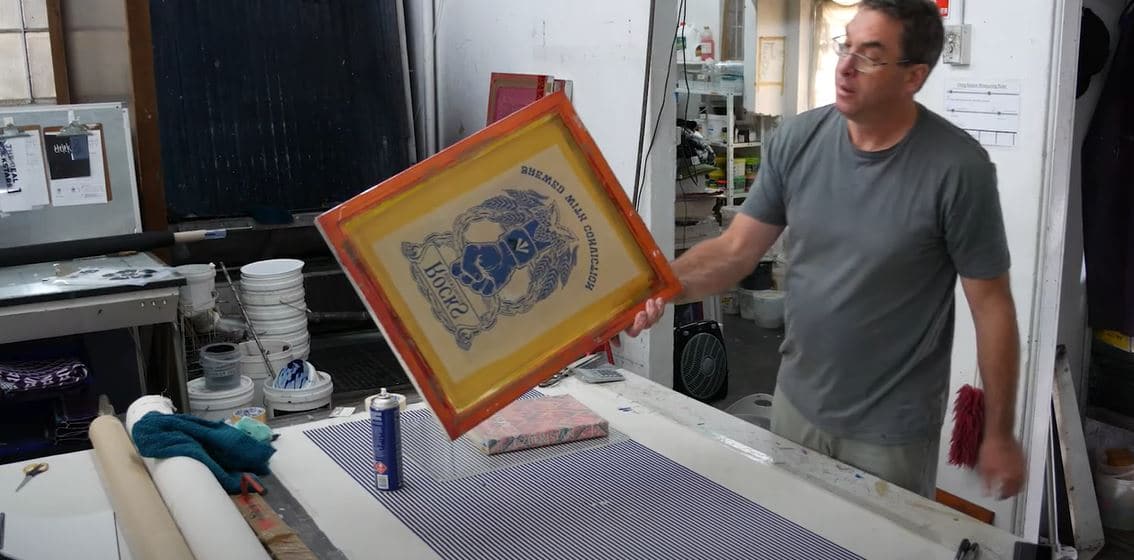ChatGPT said: Unbiased breakdown of 10:9 Design reviews: what you should know before ordering
The Crucial Guide to Comprehending Screen Printing and Its Versatile Uses
Screen printing has a rich background that goes back to old times, advancing right into an advanced method made use of throughout different industries today. This overview explores the complexities of the screen printing process, describing its applications in fashion, marketing, and home design - 10:9 Design Embroidery. Comprehending these principles can open imaginative possibility for both business and imaginative projects. The following sections will reveal vital suggestions and methods to improve one's screen printing undertakings
The History of Screen Printing
Screen printing has origins that map back centuries, its advancement shows the technical and artistic innovations of different cultures. Coming from in ancient China, the strategy was originally made use of for decorating fabrics and later spread to Japan, where it ended up being integral to Ukiyo-e woodblock printing. The technique moved to Europe in the 18th century, where it got popularity among craftsmens and industrial printers. The development of photo emulsion in the 20th century revolutionized screen printing, permitting more elaborate styles and higher efficiency. Artists like Andy Warhol further drove its popularity, using the tool to develop renowned works that blended commercialism and great art. By the late 20th century, screen printing had actually established itself as a flexible technique, employed in fashion, advertising and marketing, and art. Today, it proceeds to develop, incorporating digital innovation and broadening its applications throughout various industries.
The Screen Printing Refine Explained
Screen printing changes imaginative visions into concrete layouts via a collection of specific actions. An image is produced and after that transferred onto a screen, normally made of great mesh material extended over a frame. A light-sensitive solution is put on the screen, which is revealed to light, hardening in locations not covered by the image. After rinsing the unhardened solution, a stencil is developed.
Next, the screen is placed over the substrate, whether it be textile, paper, or an additional product. Ink is after that pushed through the open areas of the pattern using a squeegee, transferring the style onto the substratum listed below. This process can be repeated for multiple colors, requiring separate displays for each tone. Ultimately, the published thing is treated using heat to guarantee the ink sticks properly, resulting in a long lasting, dynamic layout on-line.
Kinds of Screen Printing Techniques

Additionally, specialized methods, such as discharge screen printing, eliminate dye from the textile to create softer prints, while foil screen printing uses metallic aluminum foil to achieve a glossy surface (10:9 Design Screen Printing). Each strategy provides distinct characteristics, catering to different innovative requirements and production ranges, eventually expanding the possibilities within the screen printing domain
Applications of Screen Printing in Numerous Industries

Furthermore, the signs and advertising and marketing industries make use of screen printing for creating distinctive displays and banners. This approach permits vibrant colors and elaborate layouts that catch focus. In electronics, screen printing is utilized for using conductive inks to motherboard, essential for component connections. Moreover, the home design industry embraces screen printing to produce distinctive styles on textiles and wall art. Generally, screen printing works as a crucial tool across diverse fields, enhancing items with personalized and visually appealing graphics.
Tips for Successful Screen Printing Projects
While undertaking a screen printing task, mindful attention to information can substantially boost the learn the facts here now final outcome. First, selecting high-quality materials is essential; this consists of the screen, inks, and substratums. Using ideal mesh matters can impact ink deposition and information resolution. Preparation is equally crucial; thorough cleaning of displays and correct exposure times guarantee crisp prints.
Next, exact enrollment is crucial for multi-color prints. Utilizing positioning devices can help accomplish precise layering. In addition, testing prints on scrap products before manufacturing helps recognize prospective concerns without wasting sources.

Regularly Asked Inquiries
What Products Are Ideal for Screen Printing on Material?
Cotton and polyester blends are ideal for screen printing on material due to their longevity and ink absorption. Furthermore, specialty materials like silk or canvas can produce unique textures and finishes, boosting the total design quality.
Just how Do I Tidy and Maintain Screen Printing Tools?
To cleanse and keep screen printing equipment, one must on a regular basis clean displays with suitable solvents, inspect mops for wear, oil moving parts, visit homepage and shop all products in a dry, dust-free setting to lengthen their life expectancy.
What Are the Environmental Impacts of Screen Printing?
Screen printing can have substantial environmental impacts, consisting of chemical waste from solvents and inks, water use during cleansing procedures, and power consumption. Environment-friendly materials and lasting practices are essential for decreasing these negative results.
Can Screen Printing Be Done in your home Efficiently?
Screen printing can be effectively done at home with the ideal materials and methods. Hobbyists can develop quality prints, though success depends upon their skill degree, tools, and understanding of the process entailed.
What Are the Costs Related To Beginning a Screen Printing Organization?

Beginning a screen printing business includes expenses for tools, products, and workspace. Initial expenditures typically range from a few hundred to a number of thousand bucks, relying on the scale, high quality of machinery, and preferred manufacturing ability.
Screen printing has an abundant background that dates back to old times, evolving into a sophisticated method made use of throughout numerous sectors today. An additional strategy, rotating screen printing, uses round displays, helping with continual printing on textile rolls, therefore boosting performance for large manufacturings. Additionally, specialized methods, such as discharge screen printing, eliminate dye from the material to create softer prints, while foil screen printing uses metal aluminum foil to accomplish a glossy surface. In the fashion industry, screen printing is extensively made use of to develop lively styles on apparel, enabling brands to showcase their unique designs. Cotton and polyester blends are ideal for screen printing on fabric due to their sturdiness and ink absorption.